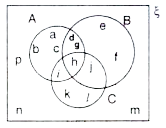Given the following two mechanisms, one with catalyst and the other without catalyst.
(i) A+B→C (slow)
(ii) C+B→F+A (fast)
(iii) B+B→F (slow)
Which mechanism use the catalyst and what is it ?
Step (i), A
Step (ii), B
Step (iii), F
Steps (i) and (ii), C
The correct Answer is:A
To determine which mechanism uses a catalyst and identify the catalyst, let's analyze the given reactions step by step.
Step 1: Identify the reactions and their rates
We have three reactions:
1. Reaction 1: A+B→C (slow)
2. Reaction 2: C+B→F+A (fast)
3. Reaction 3: B+B→F (slow)
Step 2: Analyze the role of each reactant
- In Reaction 1, reactants A and B produce C. Since this is a slow reaction, it likely determines the rate of the overall mechanism.
- In Reaction 2, C reacts with B to produce F and regenerate A. This reaction is fast, indicating that it quickly consumes C and produces F while also regenerating A.
- In Reaction 3, B reacts with itself to produce F, which is also a slow reaction.
Step 3: Identify the catalyst
A catalyst is defined as a substance that increases the rate of a reaction and is not consumed in the process. It is regenerated at the end of the reaction sequence.
- In Reaction 2, A is produced again after being consumed in Reaction 1. This means that A is not permanently consumed in the reaction sequence; instead, it is regenerated.
- Therefore, A acts as a catalyst in this mechanism because it facilitates the conversion of C to F and is regenerated in the process.
Conclusion
The mechanism that uses a catalyst is the one involving the reactions of A, B, and C. The catalyst in this case is A.
Summary
- Mechanism using the catalyst: The first mechanism (involving A+B→C and C+B→F+A).
- Catalyst: A
---
We have three reactions:
1. Reaction 1: A+B→C (slow)
2. Reaction 2: C+B→F+A (fast)
3. Reaction 3: B+B→F (slow)
- In Reaction 1, reactants A and B produce C. Since this is a slow reaction, it likely determines the rate of the overall mechanism.
- In Reaction 2, C reacts with B to produce F and regenerate A. This reaction is fast, indicating that it quickly consumes C and produces F while also regenerating A.
- In Reaction 3, B reacts with itself to produce F, which is also a slow reaction.
A catalyst is defined as a substance that increases the rate of a reaction and is not consumed in the process. It is regenerated at the end of the reaction sequence.
- Therefore, A acts as a catalyst in this mechanism because it facilitates the conversion of C to F and is regenerated in the process.
The mechanism that uses a catalyst is the one involving the reactions of A, B, and C. The catalyst in this case is A.
- Mechanism using the catalyst: The first mechanism (involving A+B→C and C+B→F+A).
- Catalyst: A
Topper's Solved these Questions
- CHEMICAL KINETICSBOOK - CENGAGE CHEMISTRY ENGLISHCHAPTER - CHEMICAL KINETICSEXERCISE - Exercises Assertion-Reasoning
22 Videos
- CHEMICAL KINETICSBOOK - CENGAGE CHEMISTRY ENGLISHCHAPTER - CHEMICAL KINETICSEXERCISE - Exercises Integer
15 Videos
- CHEMICAL KINETICSBOOK - CENGAGE CHEMISTRY ENGLISHCHAPTER - CHEMICAL KINETICSEXERCISE - Exercises Multiple Correct
33 Videos
- CARBOXYLIC ACIDS AND THEIR DERIVATIVESBOOK - CENGAGE CHEMISTRY ENGLISHCHAPTER - CARBOXYLIC ACIDS AND THEIR DERIVATIVESEXERCISE - Exercises Archives (Analytical And Descriptive)
34 Videos
- COORDINATION COMPOUNDSBOOK - CENGAGE CHEMISTRY ENGLISHCHAPTER - COORDINATION COMPOUNDSEXERCISE - Archives Subjective
18 Videos
Similar Questions
A following mechanism has been proposed for a reaction
2A+B→D→E
A+B→C+D(slow)
A+C→E (fast)
The rate law expression for the reaction by RDS methd is:
View SolutionIn the following reactions, identify the compounds A,B,C and D.
(i) PCl5+SO2→A+B
(ii) A+MeCOOH→C+SO2+HCl
(iii) 2C+Me2Cd→2D+CdCl2.
View SolutionFor an exothermic chemical process occurring in two as
(i) A+B→X (slow)
(ii) X→AB (fast)
The process of the reaction can be best described by
View SolutionThe mechanism for the overall reaction is
A2+B→C
A2→2A (slow)
2A+B→X (fast)
If a catalyst D changes the mechanism to
A2+D→A2D (slow)
A2D⇒2A+D (fast)
2A+B→C (fast)
Which is the rate expresison for the reaction with and without a catalyst ?
View SolutionA chemical reaction proceeds as follows:
A+C→D+F (Slow)
F+B→G (Fast)
G+C→E (Fast)
Suggest rate law,units for rate constant, and overall reaction.
View SolutionMechanism of a hypothetical reaction
X2+Y2→2XY is given below:
(i) X2→X+X (fast)
(ii) X+Y2⇔XY+Y (slow)
(iii) X+Y→XY (fast)
The overall order of the reaction will be :
View SolutionUse the given diagram to find:
(i) A∪(B∩C)
(ii) B−(A−C)
(iii) A-B
(iv) A∩B'
is A∩B'=A−B?

View SolutionMechanism of a hypothetical reaction
X2+Y2→2XY is given below:
(i) X2⇔X+X (fast)
(ii) X+Y2→XY+Y (slow)
(iii) X+Y→XY (fast)
The overall order of the reaction will be :
View SolutionFrom the following mechanism of a complex reaction, find out the order of a reaction, molecularity and rate law :
A+B→M
M+B→N+L(Slow)
N+L+B→C
A+3B→C
View SolutionA reaction is found to proceed in two steps as A+B→E (slow),, A+E→C+D (fast). Write the law expresison and overall balanced equation.
View Solution
